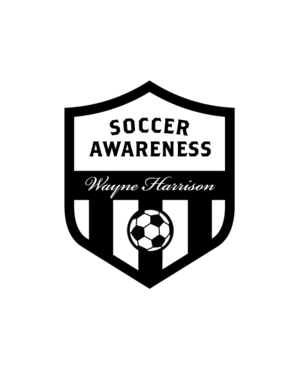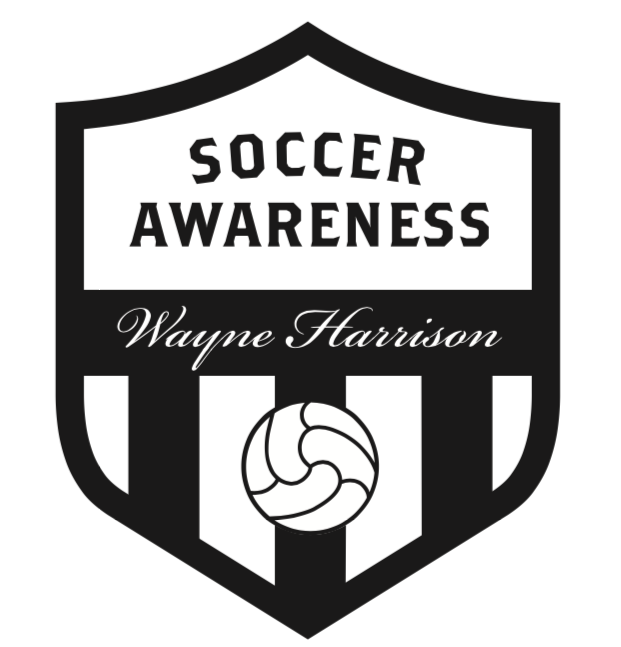The Importance of Developing Players Through Teaching Rondos
/The following comes from Soccer Awareness eBook "Developing Players with Rondos Using the Soccer Awareness Philosophy"
This 222 page eBook explores the use of rondos in youth soccer. Rondos are a great way to prepare players for the game situations and especially the fast decision making needed within the game. I have included as a way to work into these game situations many Rondo ideas that I feel are great foundation builders for players learning to combine and play together. I have stayed with simplistic ideas that all levels of players can try and be successful at. It is up to each coach to work out how to make it work for their players.
Though the foundation of the basic rondo stays the same; we explore different ways to present it. It can be made easier or more difficult based on the number of touches players are allowed, for example, so it benefits ALL players who practice with them; also the size of area they play within can be manipulated to change the challenge. Preview Here
This is an introduction to my book exploring the use of rondos in youth soccer.
I have included as a way to work into these game situations many Rondo ideas I feel are great foundation builders for players learning to combine and play together.
I have stayed with simplistic ideas that all levels of players can try and be successful at, it is up to each coach to work out how to make it work for their players.
Though the foundation of the basic rondo stays the same, we explore different ways to present it. It can be made easier or more difficult based on the number of touches players are allowed for example so it benefits ALL players who practice with them; also the size of area they play within can be manipulated to change the challenge.
Rondos are a great way; in my opinion; to prepare players for the game situations and especially the fast decision making needed within the game.
Pep Guardiola quoted this about rondos at Barcelona: “What I learnt here is everything starts with the ball and ends with the ball. Sometimes we forget that it’s a game of 11 v 11 with ONE BALL. We try to keep this ball, we try to play with this ball, we try to make everything with the ball. This is what we learn when we start as children there.”
What Do Rondos Teach?
A rondo for example isn't just 4 players playing keep away from a single player and a bit of fun (though they Are fun), what you get out of a rondo is the following:
Soccer Awareness: Assessing options BEFORE receiving the ball: The Think and Look
Technique,
Mobility,
Agility and balance
Body position,
Foot preparation,
Communication,
The 1st touch,
The 2nd touch, and beyond
Teamwork,
Collective tactical understanding in a small sided game environment,
Positioning OFF the ball,
Problem solving,
And developing creativity and imagination,
Intensity of play,
Physically challenging;
Developing Angles of support;
Opening up passing lanes by movement off the ball;
Speeding up thinking and decision making, The SKILL FACTOR;
ltimately providing a competitive environment where no one wants to give the ball away nd finally,
They are fun to do.
An example of how we develop a Soccer Awareness Rondo over time and increase the challenges
We begin with a basic Rondo. It is none pressured, unlimited touches, and presented in a simple way to allow the players to easily begin the process of education. It is the attention to detail that is paramount in the learning process. The Ball must be passed around the square not across it. Players adjust their position based on the ball. They use the cones as positional points of reference.
Players MUST always open up their body stance to receive with their BACK FOOT. Ways to build the Rondo and increase challenges:
Playing unlimited touches
Playing 3 touches
Playing two touches;
Playing one touch when able but 2 touches maximum
Adding a defender in the middle so 4 v 1 (can again go back to unlimited touches, 3, then 2, then 1 when able so many more progressions just within the 4 v 1 itself).
Players change position and rotate on the outside
Add another defender, now 4 v 2 (number of touches, size of area change etc)
Challenge outside player to split the 2 defenders with a pass between them
Add a neutral attacking player in the middle who outside players MUST involve consistently so now 4 v 2 plus 1. Neutral player 3 or 2 touches only
Neutral player ONE touch only
Neutral player can rotate in and out with outside players; so very fast decision making in rotations of players added to the passing itself.
Reduce to a 3 v 1 rondo and assess if the players are ready to play 1 or 2 touches yet. A very fast movement off the ball challenge now
Decrease the size of the grid so less space, faster decisions needed; tighter passing lanes to find, better soccer awareness required.
Can you think of any other progressions you could add to this to increase the challenge and intensity of the practice?
Once players are EXCELLENT at all these progressions a logical move now would be to go to double rondos. More players, more options, more decisions, and now mental transitions happen more going from attacking to defending at pace






















This is a 2 v 2 game going to 4 goals. The team who scores stays on and must quickly defend the 2 new players coming in (one from each goal that the opposition defends).